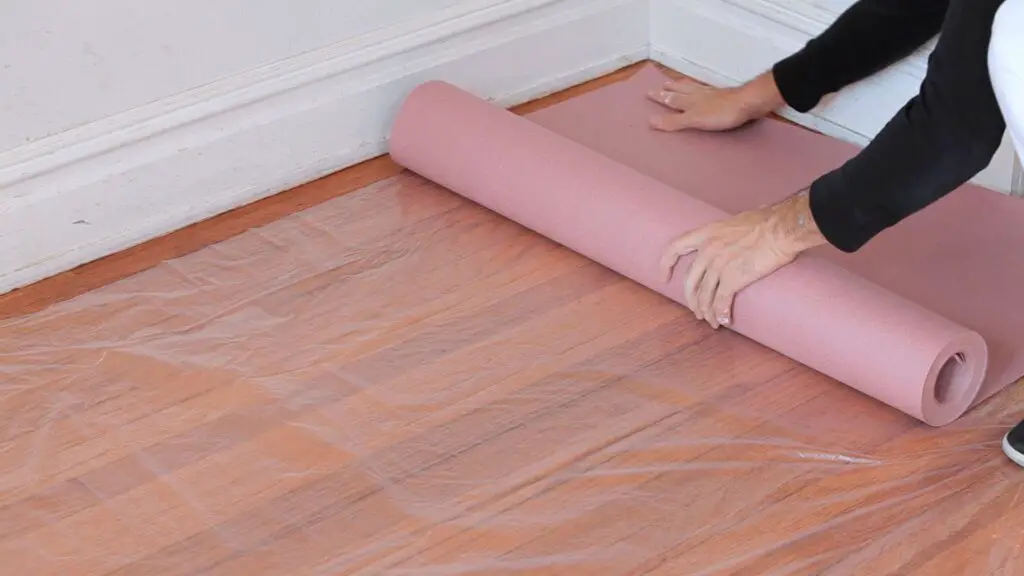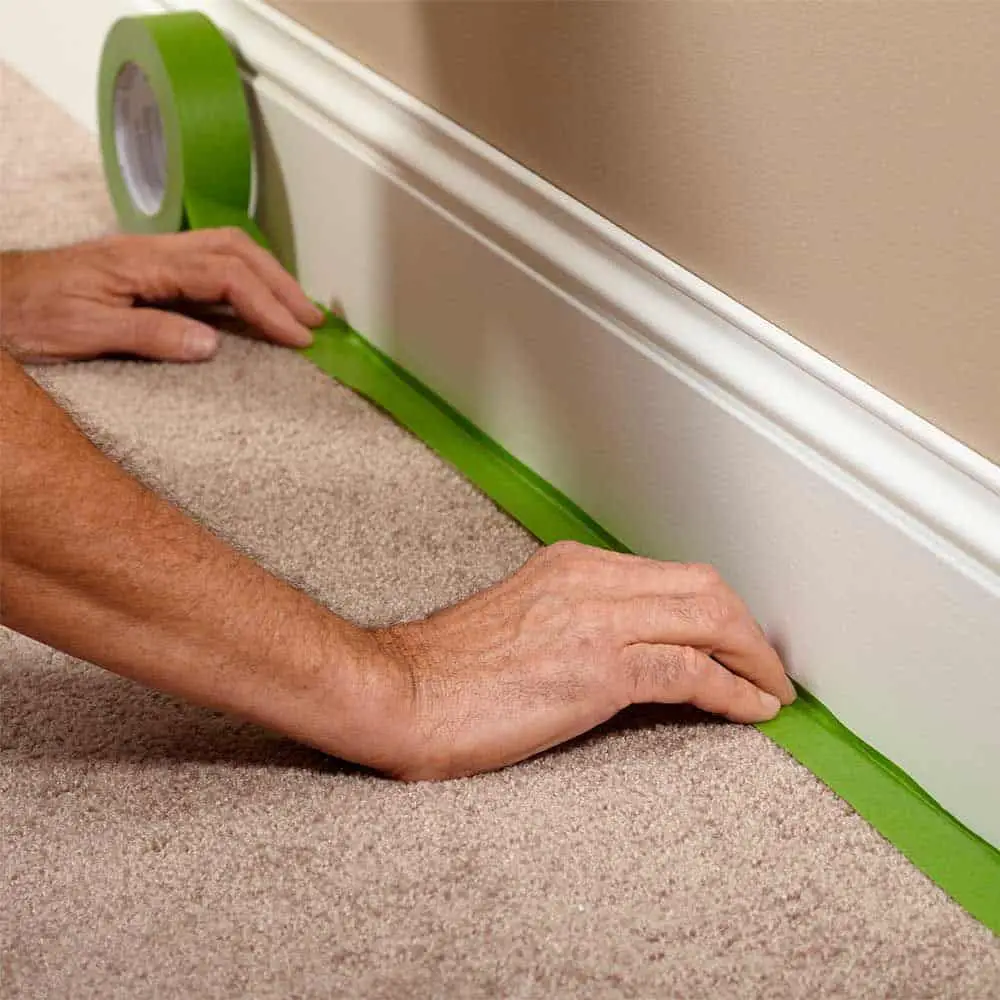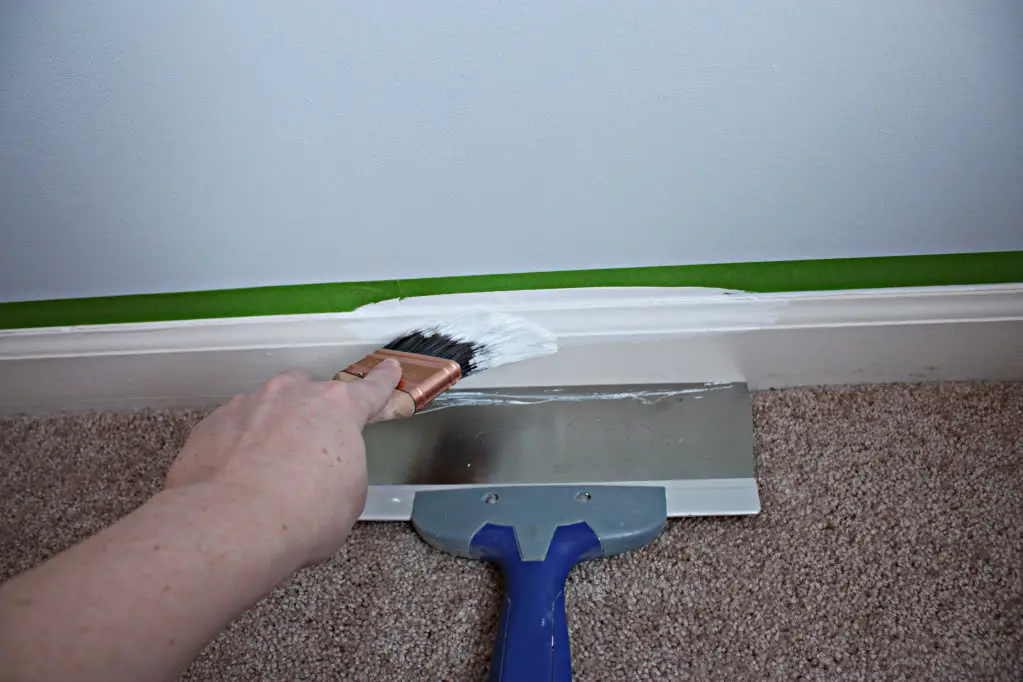How To Protect Carpet When Painting Baseboards
Introduction
How To Protect Carpet When Painting Baseboards: Painting baseboards can be a great way to freshen up the look of a room and give it a polished finish. However, it can also be a messy process that can potentially damage your carpet if not done carefully. The last thing you want is to spend time and effort painting your baseboards heat, only to find that your carpet has been stained or ruined in the process. Fortunately, there are several steps you can take to protect your carpet while painting baseboards.
Carpet is a significant investment in any home, and it adds warmth and comfort to a room. It is essential to protect your carpet from any potential damage during a painting project. Paint spills or splatters can be challenging to remove from carpet fibers, and they can leave unsightly stains that are difficult to get rid of. Additionally, paint can seep through drop cloths or plastic sheets if not properly secured, leading to permanent damage to your carpet. Taking the necessary precautions to protect your carpet will save you time, money, and frustration in the long run.
Another effective method is to use painter’s tape along the edges of the baseboards where they meet the carpet. This creates a clean and precise line, preventing any paint from seeping onto the carpet. Make sure to press the tape firmly onto the baseboards to create a tight seal. Additionally, using a putty knife or a similar tool, gently tuck the edge of the tape under the baseboards to further protect the carpet.

How do you paint baseboards when you have carpet?
When it comes to painting baseboards, having carpet can present a unique challenge. The last thing you want is to accidentally get paint on your carpet and create a mess that is difficult to clean up. However, with the right preparation and techniques, you can successfully paint your baseboards without damaging your carpet.
First and foremost, it is important to protect your carpet before you begin painting. One way to do this is by using painter’s tape to create a barrier between the baseboards and the carpet. This will help prevent any accidental paint drips or brush strokes from touching the carpet.
Another option is to use a drop cloth or plastic sheeting to cover the carpet. Lay the cloth or sheeting along the baseboards, extending it out onto the carpet. Secure the edges with tape or weights to ensure it stays in place. This will provide an extra layer of protection against any paint splatters or spills.
Before you start painting, it is also a good idea to clean the baseboards. Use a mild detergent and warm water to remove any dirt or grime that may have accumulated. This will help the paint adhere better and result in a smoother finish. Allow the baseboards to dry completely before proceeding.
One option is to use a small brush or foam roller to carefully apply the paint to the baseboards. Take your time and use steady, controlled strokes to ensure accuracy. Another technique is to use a paint shield or a piece of cardboard to shield the carpet while you paint. Hold the shield or cardboard against the baseboards as you paint, creating a barrier between the paint and the carpet.
How do you paint without ruining carpet?
Painting can be a messy task, especially when it comes to protecting your carpet from accidental spills and splatters. However, with the right precautions and techniques, you can successfully paint without ruining your carpet. Here are some tips to help you achieve a clean and professional-looking paint job while keeping your carpet safe.
1. Prepare the area: Before you start painting, it’s important to prepare the area properly. Remove any furniture or objects that could get in the way and cover them with plastic sheets or drop cloths. Use painter’s tape to protect the edges of the carpet and baseboards.
2. Lay down a protective barrier: To prevent paint from seeping through the carpet fibers, lay down a protective barrier. You can use plastic sheets, old newspapers, or a painter’s drop cloth. Make sure the barrier covers the entire area you’ll be painting.
3. Use a paint tray with a drip guard: When using a paint tray, choose one with a drip guard. This will help prevent paint from dripping onto the carpet when you load your brush or roller.
4. Be careful with your brush or roller: Avoid pressing too hard or dragging the bristles or roller against the carpet. Instead, use smooth and controlled strokes to apply the paint.
5. Clean up spills immediately: Accidents happen, and if you do spill paint on your carpet, it’s important to act quickly. Avoid rubbing the paint, as this can spread it further into the carpet fibers.
Do you paint baseboards before or after carpet?
Paint or stain your baseboards before installing the carpet. Add protection (like painter’s tape) to your baseboards to keep them from getting damaged during the carpet installation.
When it comes to painting baseboards, one common question that arises is whether to paint them before or after installing carpet. The answer to this question depends on various factors, including personal preference, convenience, and the type of carpet being installed. In this article, we will explore both options and discuss their pros and cons.
Painting baseboards before installing carpet
One option is to paint the baseboards before installing the carpet. This approach allows for easier access to the baseboards and ensures a clean and even paint job. By painting the baseboards first, you can avoid the risk of getting paint on the newly installed carpet.
However, there are a few considerations to keep in mind when painting baseboards before installing carpet.This may require covering the baseboards with protective materials or temporarily removing them until the carpet is installed.
Painting baseboards after installing carpet
Alternatively, some people prefer to paint the baseboards after installing the carpet. It also provides an opportunity to touch up any areas that may have been damaged during the installation.
However, painting baseboards after installing carpet can be more challenging and time-consuming. It requires careful masking and protection of the carpet to avoid any accidental paint splatters or spills. Additionally, if you decide to change the color of the baseboards in the future, you will need to be prepared for the extra effort of painting around the carpet.
What do you put between baseboard and carpet?
Fixing gaps after floors are already installed
You’ll want to use a paintable latex silicone caulk to fill the gap. Once the caulk is dried, paint the caulk to match the baseboards.
When installing carpet, it is important to consider the finishing touches that will give your space a polished look. One of these finishing touches is the baseboard, which is the trim that covers the gap between the wall and the floor. However, you may be wondering what to put between the baseboard and the carpet to ensure a clean and professional appearance.
The answer to this question is simple: a base shoe molding. Base shoe molding, also known as quarter round molding, is a small strip of wood or plastic that is installed between the baseboard and the carpet. It is typically used to cover any gaps or imperfections that may exist between the baseboard and the carpet, creating a seamless transition between the two.
Base shoe molding serves several purposes. Firstly, it provides a finished look to the carpet installation by covering any exposed edges or gaps. This can help to enhance the overall aesthetic appeal of the room. Additionally, base shoe molding can help to protect the edges of the carpet from wear and tear, extending its lifespan.
When installing carpet, it is important to consider the finishing touches that will give your space a polished look. One of these finishing touches is the base shoe molding, which is installed between the baseboard and the carpet. This molding serves to cover any gaps or imperfections, providing a seamless transition between the two. By properly aligning and securing the base shoe molding, you can achieve a clean and professional appearance for your carpet installation.
How do you paint walls and protect carpet?
Tape corners and walls using painter’s or masking tape. Carpet must be protected when painting walls. Mishandled painting can destroy carpets. Walls may be painted without destroying carpets with proper techniques and tools.
Prepare the room before painting. This includes eliminating furniture and other impediments from walls and rugs. Plastic sheets or drop cloths should help protect furniture from paint splatters. Remove decorations and wall hangings before painting.
Second, protect the carpet with plastic or drop cloth. Prevents paint splatters from infiltrating carpet. Tape carpet edges with painter’s tape. Painter’s tape on baseboards and carpet edges creates a clean wall-carpet line. This prevents paint from bleeding onto carpet and makes painting accurate and professional.
Finally, good painting techniques reduce splatters. A good roller or brush should apply paint evenly. A paint tray or bucket can control paint on the roller or brush to prevent drips. With precautions and the right tools, you can paint walls without damaging carpet.
Painting baseboards requires carpet protection from spills and drips. Protecting the carpet with drop cloths or plastic works wonderfully. These covers prevent carpet paint damage. Secure drop cloths or plastic sheeting to prevent shifting during painting.
Are there any specific products or materials that can be used to safeguard a carpet during the painting process?
When it comes to protecting your carpet while painting baseboards, there are several specific products and materials that can be used to safeguard it. One popular option is to use plastic sheeting or drop cloths. These can be laid down over the carpet to create a barrier between the paint and the carpet fibers. Plastic sheeting is particularly effective because it is waterproof and can easily be taped down to ensure it stays in place.
Another option is to use carpet protection film. This is a self-adhesive film that can be applied directly to the carpet. It provides a temporary barrier that prevents paint from seeping into the carpet fibers. Carpet protection film is easy to apply and remove, making it a convenient choice for protecting your carpet during the painting process.
Are there any recommended techniques or strategies for preventing paint spills or drips from damaging a carpet?
When painting baseboards, it is crucial to take precautions to prevent paint spills or drips from damaging the carpet. One effective technique is to use drop cloths or plastic sheeting to cover the entire carpeted area. These protective materials act as a barrier between the paint and the carpet, preventing any accidental spills or drips from seeping through.
Another recommended strategy is to use painter’s tape along the edges of the baseboards to create a clean and precise line. This tape not only helps in achieving a professional finish but also acts as an additional layer of protection for the carpet. It creates a barrier that prevents any paint from accidentally touching or staining the carpet fibers.
Additionally, it is important to be mindful of the paintbrush or roller technique used. By using a steady hand and applying paint evenly, the risk of drips or spills can be minimized. It is also advisable to use a smaller brush or roller for more precise control, especially when working near the carpeted area.
How can one ensure that the edges of the baseboards are properly painted without accidentally staining the carpet?
When painting baseboards, it is crucial to take precautions to avoid staining the carpet. One effective method is to use painter’s tape to create a barrier between the baseboards and the carpet. Apply the tape along the edge of the baseboards, pressing it firmly to ensure a tight seal. This will prevent any paint from seeping onto the carpet and ensure clean, crisp edges.
Another technique is to use a small, angled paintbrush to carefully paint along the edges of the baseboards. By using a precise and controlled motion, you can avoid accidentally touching the carpet with the brush. It is important to take your time and work slowly to ensure accuracy and minimize the risk of any paint mishaps.
Additionally, placing a drop cloth or plastic sheeting on the floor near the baseboards can provide an extra layer of protection. This will catch any paint drips or spills, preventing them from reaching the carpet. It is important to secure the drop cloth or plastic sheeting in place to avoid any accidental movement that could expose the carpet to potential damage.
Are there any additional precautions or steps that should be taken to minimize the risk of carpet damage while painting baseboards?
Yes, there are several additional precautions and steps that can be taken to minimize the risk of carpet damage while painting baseboards. One important step is to thoroughly clean the area around the baseboards before starting the painting process. This will help remove any dust or debris that could potentially get onto the carpet and cause damage. Additionally, it is recommended to cover the entire carpeted area with a drop cloth or plastic sheeting to provide an extra layer of protection.
Another precaution that can be taken is to use painter’s tape along the edges of the baseboards to create a barrier between the paint and the carpet. This will help prevent any accidental spills or drips from reaching the carpeted area. It is important to apply the tape carefully and securely to ensure that it stays in place throughout the painting process.
It is advisable to use a high-quality paintbrush or roller to ensure a clean and precise application of paint to the baseboards. This will help minimize the risk of paint splatters or smudges that could potentially damage the carpet. Additionally, it is important to work slowly and carefully when painting near the carpeted area to avoid any accidental contact between the paint and the carpet.

Conclusion
Painting baseboards requires protecting your carpet to keep it clean and unharmed. You can protect your carpet from spills and stains by following the appropriate steps.
Drop cloths or plastic sheeting are good carpet protectors. A barrier between the paint baseboards and the carpet prevents paint and dirt from touching the flooring. To avoid shifting or moving while painting, drop cloths or plastic sheeting should be tightly tied or weighted down.
Painter’s tape also protects carpets. Painter’s tape along baseboard edges creates a neat, accurate line and prevents paint from seeping into the carpet. After the paint dries, gently remove the painter’s tape to avoid carpet fiber paint baseboards damage.
Being careful and observant when painting might help protect your carpet. Using a steady hand and taking your time will prevent spills and drips. Keep a moist cloth or sponge handy to clean up spills and smudges before they dry and become harder to remove.
Protecting carpet when painting baseboards is simple but essential for flooring cleanliness and integrity. Drop cloths or plastic sheeting, painter’s tape, and caution during painting can protect your carpet and keep it like new.








